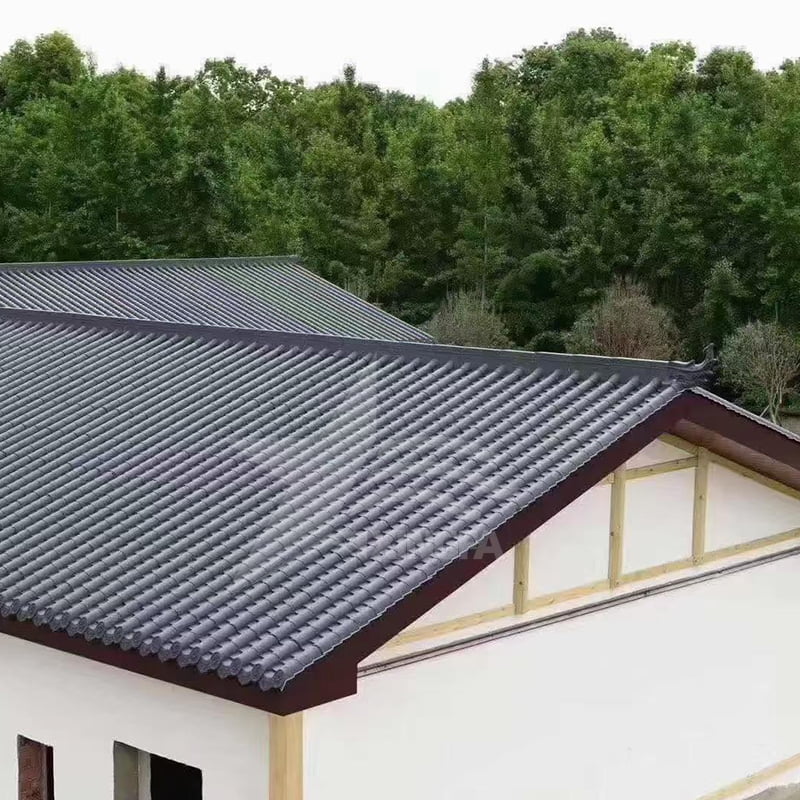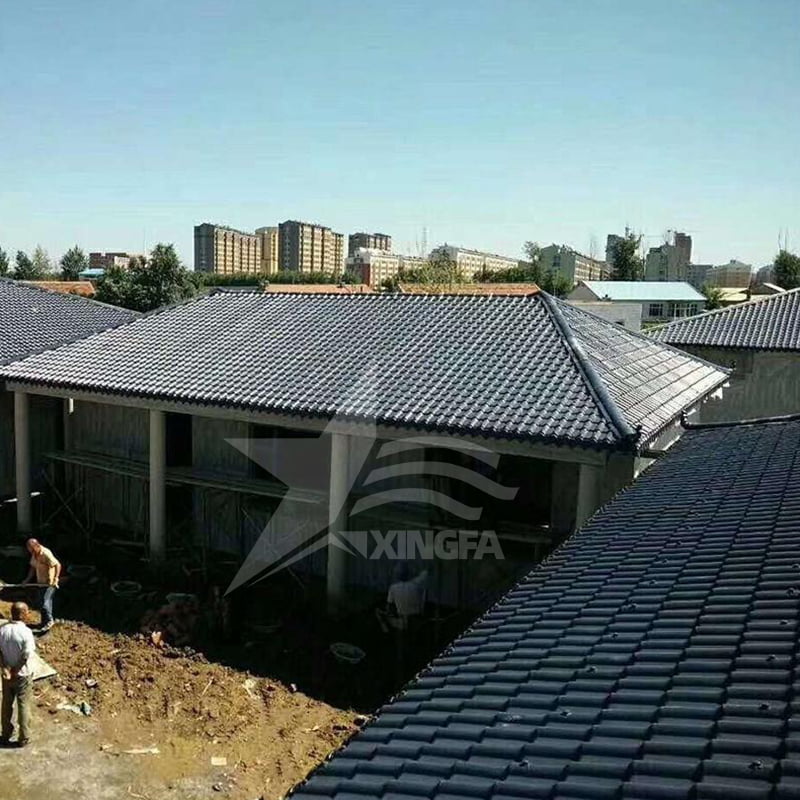In recent years, synthetic resin tiles have garnered widespread market attention as a new type of building material. However, a common question persists among consumers: “Why do some synthetic resin tiles last for decades while others crack and leak within a few years?” Today, let’s delve into the lifespan of synthetic resin tiles.

Firstly, the quality of raw materials used in synthetic resin tiles is crucial. Main materials like polyvinyl chloride (PVC) resin and high weather-resistant ASA engineering resin are resistant to chemical reactions with acids, alkalis, salts, and other substances, ensuring long-term protection against corrosion. Even in prolonged exposure to acidic or alkaline environments, resin tiles maintain outstanding performance with excellent anti-corrosion and anti-aging properties, supporting lifespans of up to 30 years. Additionally, factors such as tile thickness, co-extrusion technology, and environmental conditions also influence their longevity.

Typically, the materials used in synthetic resin tiles not only impact their price but also directly affect their lifespan. Some manufacturers may opt for lower-cost materials, such as resin tiles with ASA layers thinner than 0.15mm or those using ABS fabrics, significantly reducing their weather resistance. Moreover, using recycled materials in resin tile production can compromise quality, leading to issues like fading and a lifespan of only 2-3 years. Consequently, these tiles are often cheaper in price.

Understanding these factors can help consumers make informed decisions when choosing synthetic resin tiles, ensuring they select products that meet durability and performance expectations over the long term.










